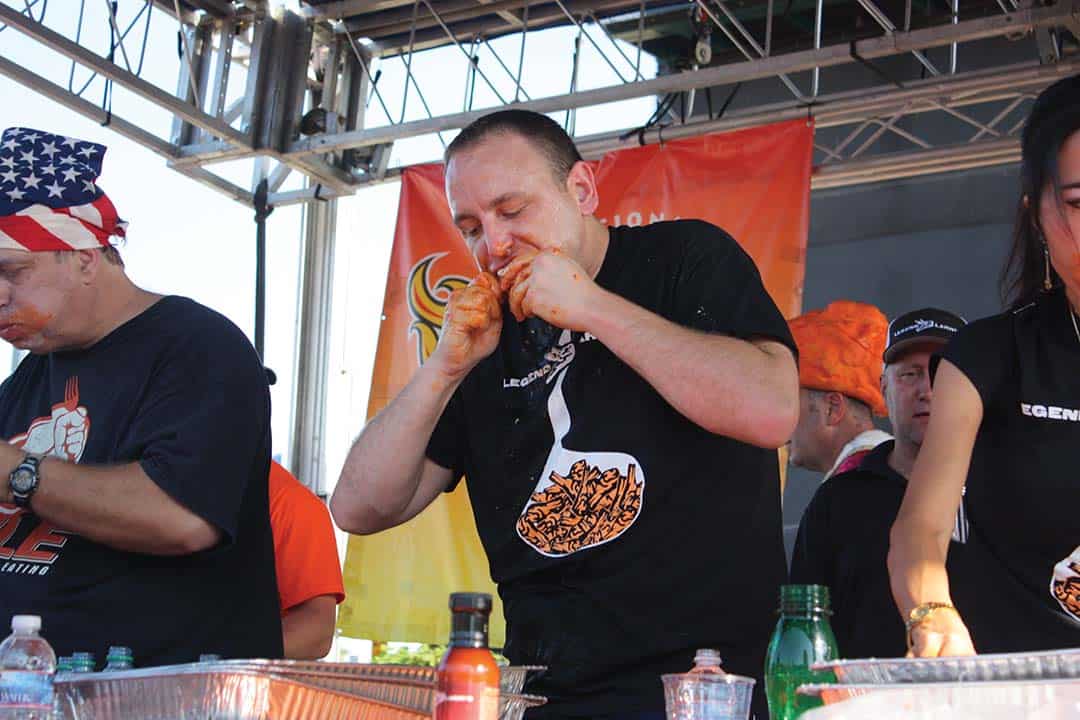Competitive eating sounds like a joke. I initially thought it was, but the sport has a major cult following as it isn’t for the faint of heart. I know what you’re thinking: it doesn’t sound that hard. What’s the big deal? The fact is this sport is no cakewalk, and believe me when I say it’s a tough hotdog to swallow.
Don’t forget to chew
Knowing how to win is important to become the next eating champion. Most competitions have a time limit, encouraging competitors to eat a lot and to eat fast. Joey Chestnut — a legend in competitive eating and the current world hotdog eating record holder — began the Nathan’s Famous Hot Dog Eating Contest with a whopping nine hotdogs per minute before slowing down to about 5.9 hotdogs. He holds the record with an insane 76 hotdogs in 10 minutes. The man isn’t human.
Apart from speed, a critical element is quantity. Competitive eaters warp their bodies to force as much food as they can down their throats. Not only do they suppress their gag reflexes to swallow, rather than waste time chewing, but they can also turn off the body’s satiety reflex. This is a gastrointestinal reflex that tells your brain when you’re stuffed. Competitors stop themselves from feeling full in order to continue eating.
Meal prep
Competitive eating requires a lot of skill and preparation. The only way one can achieve this is through intense training. Matt Stonie trained for Nathan’s by eating up to 60 hot dogs in one sitting three times a week. This ended up paying off, as in 2015, he won with 62 dogs in 10 minutes. Trial runs give competitors an edge in getting a feel for expanding their appetite, but there are also other tricks before competition day.
Competitors drastically reduce their caloric intake in the 16 to 24 hours leading up to a competition, as eating an excessive amount during this window may result in the competitor being full prior to the competition and losing. Chestnut typically fasts for two to three days before Nathan’s, eating just 500 calories a day to sustain himself. Given that men’s daily caloric intake should be approximately 2,500 calories, Chestnut’s prep is quite intensive.
Water is everything
Having liquids nearby is essential when it comes to competitive eating. It’s a great way to consume food and reduce the risk of choking. While some contests prohibit drinking liquids, competitors are allowed to dunk their food with water to lubricate it, allowing it to slide down the esophagus easier. Some contestants, like seven-time winner Takeru Kobayashi, favour this method.
Dig in
With so much preparation and training, competitive eating is not for everyone. It requires a lot of work to not only warp your body but mould your spirit into an eating machine. Given the potential health risks, including stomach rupture and water intoxication, it may be better to savour every bite rather than hork it all down.


